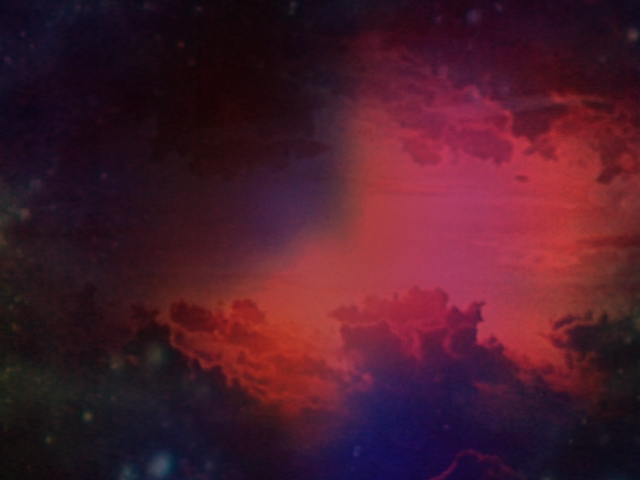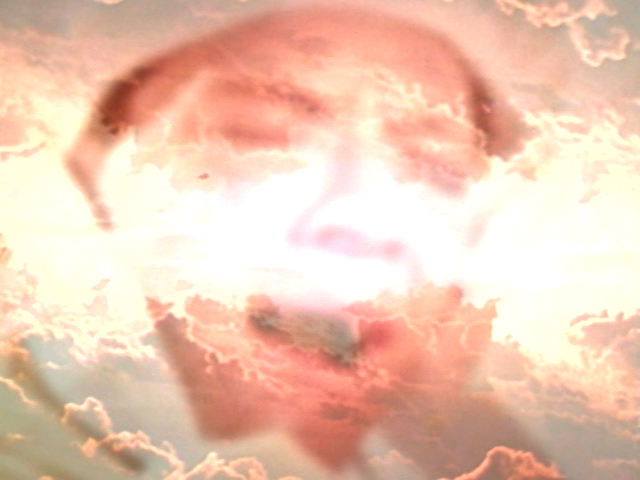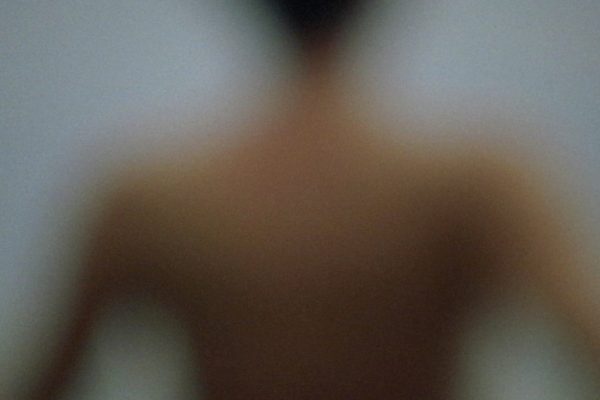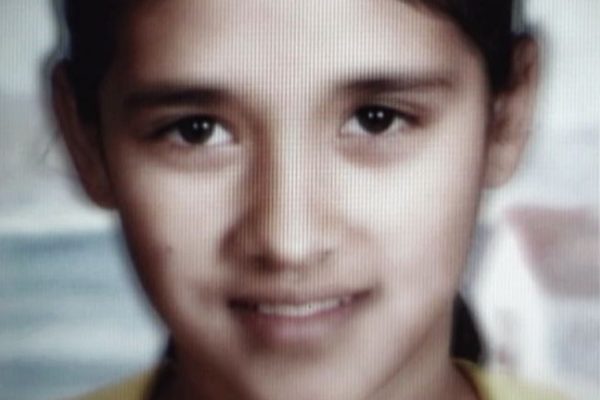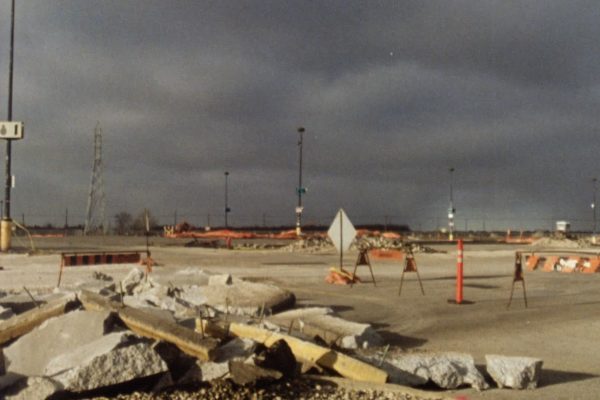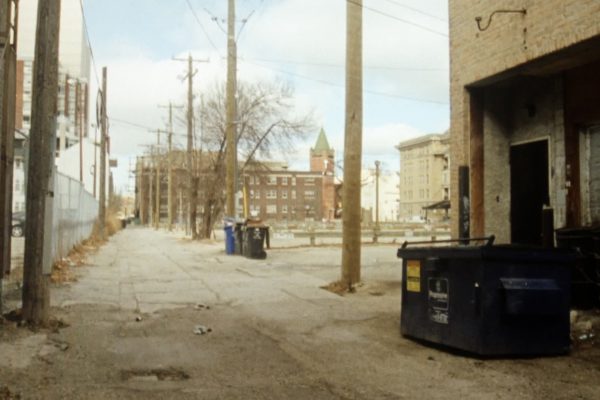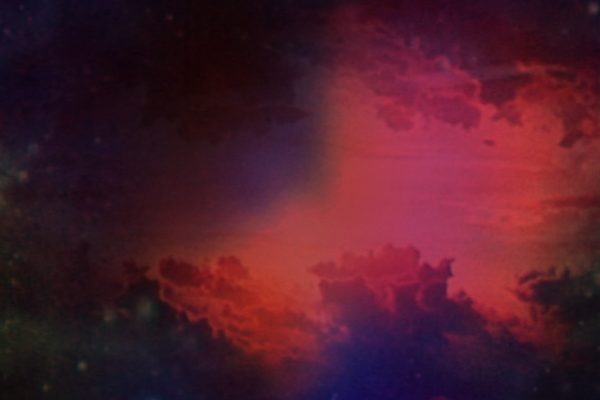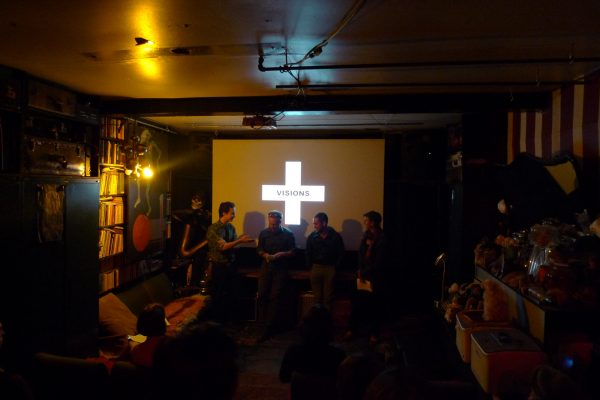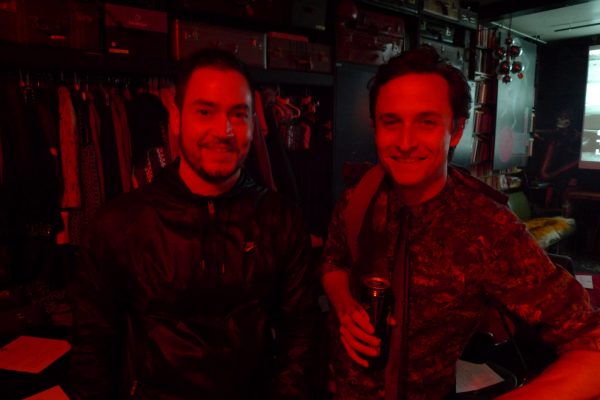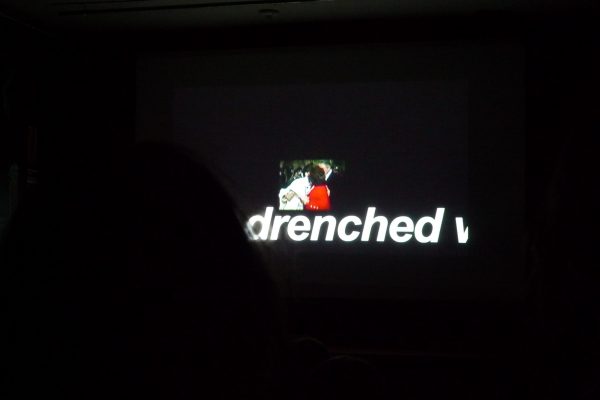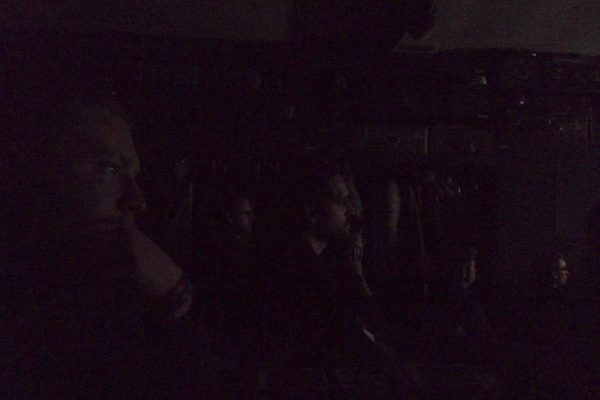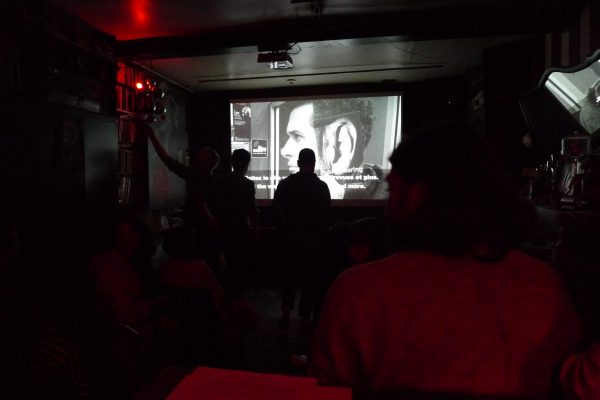Quand | When
14.08.2014 | 20h00
Où | Where
être
6029, Av Du Parc, Montréal [QC]
Média | Media
HD
En présence des cinéastes.
Billets | Tickets
Gratuit.
Aaron Zeghers is a filmmaker and musician from Winnipeg, MB. He generally works with antiquated mediums (super 8 + 16mm) and experimental processes to create experiential meditations through film.
Shannon Lynn Harris is an artist whose film and digital work reflect a creative practice rooted in personal experience. She is interested in the intersection of documentary, avant-garde film and video practices as well as the potential of expanded notions of documentary.
Pour créer ses films hybrides, Eduardo Menz a régulièrement recours aux tropes de genre, tels que le formalisme expérimental, la progression narrative et la non-fiction. Constitués de fragments formellement liés, ses œuvres dévoilent progressivement leurs couches de sens par l’usage de procédés, dont la narration progressive et la répétition, qui convoquent la mémoire du spectateur et s’adressent à la mémoire même des images.
LIFE : BEFORE, DURING & AFTER
20h00 | 43 min
Aaron Zeghers | 2011 | 1:30 | 16mm and digital found footage
A brief glimpse into the final moments of a lifetime. Created from found 16mm, video and audio footage.
Aaron Zeghers | 2014 | 8:28 | 16mm to HD
Both beauty and destruction. Both homage and critique. Sincere insincerity amidst the concrete jungle.
“Nature here is vile and base… I see fornication and asphyxiation and choking and fighting for survival and growing and just rotting away… it’s a land that God, if he exists, has created in anger. It’s the only land where creation is unfinished yet. Taking a close look at what’s around us here, there is some sort of a harmony…”
Filmed in Winnipeg, MB on November 11th, 2013 by Aaron Zeghers and Nigel Webber.
Shannon Harris | 2008 | 9:40 | 16mm to HD
Lacuna:
1. an empty space or a missing part; a gap; an absence. 2. a discontinuity in an anatomical structure.
2. a discontinuity in an anatomical structure.
Different textures of grief and acceptance emerge and the camera eye becomes a lens into the interior. Space is inhabited by memory; memory becomes a gesture that seeks the past. Lacuna is a poetic meditation that navigates a landscape of absence, memory and transformation though image and sound.
The process of shooting and editing this film was an intuitive one that was very attached to the process of working through a loss. In the summer of 2007 my mother died suddenly and unexpectedly from cancer. My connection to her is strong; it is one between mother and daughter and between place and home. This film is an image/sound poem as well as a document of the experience and grief of the loss of my mother.
Shannon Harris | 2012 | 6:45 | HD
Roughly translated terroir can mean a sense of place and coming from a place. This piece is an image/sound portrait of a personal geography as well as formal investigation of digital media. Captured entirely on a cell phone, the camera records a landscape in constant motion and disintegration. This fluctuating image is married to a sound-scape that grasps for connection that reaches over distance. It is generated from the messages left by friends and loved ones on my cellphone over the course of several years. The raw material of both image and sound come from the same place, the cell phone, which I use to record the environment around me as I move across the Canadian landscape. Rarely does one stay where one is born, we move, modern life almost necessitates it. This piece explores notions of communication and distance, technology and intimacy.
Eduardo Menz | 2007 | 4:30 | Digital8 to HD | Stereo
The juxtaposition of children’s school portraits with the anxious voices of an elementary spelling bee reveals a haunting reality of innocence that has vanished. In this experimental documentary, Eduardo Menz repurposes found images with great effect to create an emotionally compelling montage that lingers long after the film ends.
Eduardo Menz | 2005 | Hi8 to HD | 12 min | Spanish with English subtitles
In this experimental short, the viewer is forced to role-play through the repeated employment and alteration of the text, sound and image until his or her expectations have been truthfully realized. The video examines class structure, the meaning of beauty and forgotten history through two very different but significant women during Pinochet’s brutal regime of the late 1980’s.
Q+A
Q+A FR
AARON ZEGHERS : Shannon, les façons dont tu as filmé avec un téléphone portable dans Terroir, ainsi que les séquences sous l’eau dans Lacuna ont piqué ma curiosité.
SHANNON HARRIS : Les séquences sous l’eau ont été tournées avec une Bolex dans une caisse. Une chose lourde et énorme ; je portais une combinaison afin de flotter.
PUBLIC : Ceci est plus un commentaire qu’une question… J’ai vu auparavant les films d’Eduardo et de Shannon. Je voulais souligner à quel point ils n’ont pas vieilli. Ils sont toujours aussi pertinents aujourd’hui qu’au moment de leur réalisation. Je pense que c’est un signe d’une grande force créatrice. En particulier votre film, Shannon, qui me touche d’autant plus cette fois-ci.
SHANNON HARRIS : Merci. J’ai une question pour toi Aaron. Travailles-tu avec du found footage en général?
AARON ZEGHERS : Une des raisons pour lesquelles j’adore réaliser des films est que je n’ai pas à faire seulement une chose : je peux faire ce que je veux quand je veux, ce qui est très libérateur, n’est-ce pas ? J’aurai probablement plus de succès si je faisais une seule chose à laquelle j’excellerai, mais j’apprécie trop faire ce que j’ai envie. Par contre, mes principaux modes d’expérimentation se font avec du 16mm. 11 Parking Lots… c’est un travail de captation et d’enregistrement original, un peu plus formel, et I See a Light est uniquement réalisé à partir de found footage. J’apprécie suivre des pistes qui m’intriguent, traiter chaque sujet avec une approche particulière, sans essayer d’unifier mon style.
PUBLIC : Est-ce que I See a Light est composé uniquement à l’aide d’images et de sons trouvés ?
AARON ZEGHERS : Oui, que du found footage. Quelques séquences ont été traitées expérimentalement en tirage optique à l’aide d’une tireuse optique 16mm à Winnipeg. D’autres, celles des nuages et celle de la grand-mère, ont été insérées numériquement : c’est une œuvre hybride. Puis, tout le son est extrait de vidéos sur Youtube, des gens décrivent leur expérience de mort imminente, et, au tout début, c’est un scientifique qui explique comment la mort était perçue avant l’avènement de la médecine moderne et de la technologie.
SHANNON HARRIS : Alors 11 Parking Lots … pas de found footage ?
AARON ZEGHERS : Non, j’ai tourné le tout en une journée à Winnipeg, le jour du Souvenir, soit le 11 novembre 2013. Je pensais que ce serait la bonne journée pour filmer des parkings déserts, mais comme vous l’avez vu à la moitié du film, ce n’est pas si calme l’après-midi. Quelques centres commerciaux sont bondés, et je n’aurai jamais pu imaginé que cela arriverait ce jour-là.
EDUARDO MENZ : Dans I See a Light, on aurait dit que tu as filmé ces images sans objectif. Tu sais, “Voir la Lumière”…
AARON ZEGHERS : Oui, ce n’était pas la technique adoptée, mais c’était définitivement ce que j’essayais de recréer. Ou bien, j’essayais de représenter la description stéréotype de la lumière que donnent les gens quand ils vivent une expérience de mort imminente.
PUBLIC : Je suis de Winnipeg, alors ces images de parkings recouverts par cette neige me sont familières. Plus spécifiquement, il y a une lumière singulière dans les Prairies en hiver. En rétrospective, c’est intéressant de découvrir tous les détails que vous avez captés, consciemment ou non, surtout si vous l’avez filmé en une seule journée. Je me demande si, justement, c’était votre intention et à quel point vous portiez un attention particulière à la lumière : en tous cas, pour moi, ces éléments ressortaient vivement. Ces images m’ont fait frissonné et m’ont rappelé ces hivers froids.
SHANNON HARRIS : Il y a une importante notion de lieu dans ce film. C’est une notion artificielle, mais elle reste néanmoins très forte.
AARON ZEGHERS : Oui, j’ai hâte de voir ce film dans 20 ans. Ce sera probablement exactement pareil, connaissant Winnipeg ! Je ne sais pas si ce que j’ai capté, comme vous l’avez mentionné, était intentionnel, mais c’est très certainement présent. Un film tel que celui-ci est plaisant à réaliser pour un cinéaste, surtout quand on prend d’habitude tout très sérieusement. C’est agréable de sortir un jour et tourner un film en entier. Vous avez un plan et des lieux et vous le faîtes, puis vous voyez le résultat. C’était très étrange, un jour magique. Il faisait soleil au début de la journée puis nuageux, et finalement la neige a commencé à tomber quand nous étions en haut d’un stationnement étagé près du gigantesque musée des droits de la personnes qui est en cours de construction à Winnipeg, ce grand et ridicule bâtiment. Puis, le ciel s’est éclairci entièrement et la journée s’est terminée par un magnifique coucher de soleil. C’était l’idée au départ, d’essayer de capturer la nature qui dépasse nos attentes. Ça, c’est une chose que vous ne pouvez pas prévoir, mais je suis très heureux de la tournure que cela à pris.
EDUARDO MENZ : Donc tu avais déjà choisi tes lieux de tournage auparavant ?
AARON ZEGHERS : Pas vraiment. Je l’ai fait avec un jeune cinéaste, Nigel, qui a été assez gentil pour trainer avec moi cette gigantesque caméra : un garçon très bien. Nous n’avions pas vraiment une liste de lieux, mais plutôt un nombre de places en tête puisque Winnipeg est une très petite ville. J’étais à la recherche de parkings considérés comme des bâtiments historiques qui auraient été démolis ou qui auraient une certaine pertinence à mes yeux. Il y a une version élargie de ce film que je vais présenter à Winnipeg, et pendant la projection j’expliquerai en direct l’histoire de chaque lieu. Beaucoup d’entre eux ont une histoire qui a disparue. Donc nous n’avons pas cherché en amont ces lieux, mais ils sont très simples à trouver à Winnipeg. C’est une ville qui n’a aucun respect pour son histoire et qui n’est pas consciente de sa propre valeur. Dans de plus grandes villes, il y a parfois un sens démesuré de fierté et quand vous venez à Winnipeg, vous avez tendance à penser que tout est merdique, que tout le monde est nul et que tout le monde qui devient connu, comme Burton Cummings, doit être exclu : ce sont des trous du cul parce qu’ils ont réussi et nous non. Qu’ils aillent se faire foutre ! Voici en grande partie la mentalité des locaux à Winnipeg. Mais, il y a eu des choses produites là-bas très intéressantes, magnifiques et bizarres. Cependant, là encore, on les a constamment dénigrées, renfoncées. Des bâtiments sont détruits, démolis, et on ne retrouve pas de plaque commémorative ou un texte à leur propos qui serviraient de trace pour notre conscience collective et notre histoire. C’est pour cela que j’ai pensé que c’était important de faire ce film, dans ces lieux.
PUBLIC : En tant que winnipégois(e), je peux comprendre que nous sommes de nature à nous apitoyer sur notre sort. On dirait que les bâtiments tombés sont des dents manquantes de notre ville.
AARON ZEGHERS : Oui, c’est vrai. Évidemment, cela arrive ailleurs. James Benning aurait facilement pu filmer cela dans le sud de la Californie où il a filmé Ten Skies, mais il ne l’a pas fait parce que les gens en Californie ont plus d’estime de soi et choisissent de filmer le ciel plutôt que d’horrifiants parkings.
PUBLIC : Eduardo, je me demandais si l’Ère Pinochet au Chili est un thème que vous avez abordé auparavant dans votre travail ? Et, aussi, quel est votre ressenti par rapport à celle-ci, étant chilien ?
EDUARDO MENZ : J’ai fait un autre film, mais qui consistait plus en un projet de montage. Je l’ai présenté une seule fois. Ce film est le seul travail sur Pinochet que j’ai fait, et que je montre. Ma famille vient du Chili et, pour moi, c’est un film personnel qui est aussi politique. Je me souviens d’avoir grandi avec ces images télévisées, au milieu des années 1980, quand je n’étais qu’un jeune enfant en Alberta regardant la télévision satellite avec un groupe d’exilés chiliens dans un sous-sol, chez quelqu’un. On pouvait regarder les nouvelles rediffusées du Chili de cette époque. Plus tard, j’ai eu la chance de tomber sur une archive vidéo VHS d’enregistrements des nouvelles de cette période, appartenant à un gentleman âgé. Alors que je les passais en revue, je suis tombé sur deux images, présentes dans le film, et c’était comme un flashback. Je me suis dit “Oh mon dieu, j’ai les ai déjà vues !” A partir de là, j’ai commencé à faire des associations entre les deux femmes représentées parce que l’une est devenue très populaire en tant que Miss Univers en 1987 et l’autre en tant que victime brûlée en 1986, c’était à peu près pareil au final. J’ai juste ressenti que ces associations pouvaient être faites si les choses étaient déplacées. SHANNON HARRIS : C’est un coup de génie. A chaque fois que je le vois, c’est difficile à regarder. Dans ton travail, on est jamais sûr de ce que l’on voit et à un moment donné tout se révèle ce qui est en général désagréable, mais très puissant.
EDUARDO MENZ : C’est intéressant de voir que mes deux films présentés ce soir sont programmés ensemble parce qu’ils traitent de deux sujets très différents, mais au niveau formel ils se parlent. Le zoom révèle énormémement de choses dans les deux films.
AARON ZEGHERS : Est-ce que Fracas est tourné à partir d’images sur un moniteur ?
EDUARDO MENZ : Oui, les images se trouvaient sur un écran d’ordinateur et j’ai rajouté des effets qui, je l’espère, ne sont pas trop kitchs.
AARON ZEGHERS : Est-ce que ce processus de re-photographie est quelque chose que tu fais souvent ?
EDUARDO MENZ : J’aime travailler avec des moniteurs, je pense. Le moniteur en tant que média en soi est quelque chose qui m’intéresse. Un autre de mes films, un film entièrement narratif, on y trouve beaucoup de moniteurs. Le moniteur comme vecteur d’information est quelque chose qui m’attire.
SHANNON HARRIS : Quelque chose que je trouve intéressant après avoir vu Mujeres cette fois-ci était la relation entre le son, l’image et le texte, et comment ils se lient et se séparent par le zoom in et le zoom out : le texte en anglais et la narration sonore en espagnol. Cela m’a rappelé l’implication des États-Unis dans l’ascension de Pinochet au pouvoir. Pour moi, ce visionnement-ci me permet une nouvelle interprétation.
EDUARDO MENZ : Tout cela a fonctionné quasiment par chance, concernant le positionnement des mots tel que “beauty” ou “Miss Universe” sur les images d’une femme qui ne peut être ainsi qualifiée. Ce sont ces genres d’accidents qui mettent en vie le texte et le rendent choquant. Parfois, les choses s’alignent et parfois, non.
AARON ZEGHERS : Shannon, qu’est-ce que ça fait de présenter un film qui est très personnel comme Lacuna ? Je travaille présentement sur un film qui porte sur ma propre famille et c’est un projet préoccupant alors que je vais me dévoiler publiquement, très sincèrement. Est-ce que c’est difficile de regarder ton film ?
SHANNON HARRIS : Non plus maintenant, mais la première fois que je l’ai présenté c’était intense. Mais, c’était aussi une façon de faire le deuil. Quand je l’ai montré à des amis, ils ont réagi fortement et d’une manière positive. Je ne sais pas si c’était une bonne ou une mauvaise expérience, mais c’était définitivement une expérience. Tu fais ce que tu peux avec ce que tu as.
PUBLIC : Shannon, d’où vous est venue l’idée de filmer avec un téléphone portable pour Terroir ?
SHANNON HARRIS : Je ne voyage pas beaucoup, mais un peu quand je fais du travail d’arpentage. J’ai habité partout au Canada, entre la Colombie Britannique, où j’ai grandi, Montréal, où je vis, et au nord de l’Ontario où j’ai travaillé. J’ai commencé à filmer avec le téléphone et à capturer des paysages. C’était simplement le fruit du hasard que d’arriver à capturer ce que j’ai filmé alors que je bougeais constamment. J’ai commencé à filmer parce que je collectionnais les messages vocaux laissés par ma famille, mes amis et mes proches ; juste à collectionner ces voix parce que je les aimais. Et le tout, ensemble, a créé quelque chose d’autre. C’est difficile à décrire puisque ce n’était pas un film planifié. C’est juste arrivé, et ça a fonctionné. J’ai utilisé un petit portable pourri Nokia : toutes les images son pixélisées à cause de la caméra du téléphone. Il n’y a pas de manipulation numérique.
PUBLIC : C’est efficace, d’avoir la voix et les images qui proviennent toutes du téléphone.
SHANNON HARRIS : Tous les sons proviennent aussi des messages. Il n’y a pas de sons provenant de sources externes. Teresa Connors a sorti sa baguette magique pour le montage sonore. C’est une compositrice et elle a travaillé uniquement avec le matériel brut provenant du téléphone. Le paysage sonore est une chose très importante comme dans tout le reste de mon travail.
PUBLIC : Une question pour Eduardo. Je n’ai bien compris le lien entre le concours d’orthographe et les images dans Fracas. Pourquoi les avez-vous montés ensemble ?
EDUARDO MENZ : C’est une drôle d’association. Pour moi, regarder ces images de personnes disparues a toujours été une fausse association ou une contradiction. Le mot “Disparu” avec une image d’un enfant heureux sont deux éléments qui m’ont toujours paru étranges et faux dans un sens. Ma réaction et mes actions vis-à-vis ce genre de représentations, qui se retrouvent toujours dans des lieux banals comme sur des panneaux d’affichage communautaires à côté de n’importe quelles autres choses, ont été de jouer avec cette contradiction. Je voulais travailler avec la contradiction entre le concours d’orthographe et les enfants disparus. Je souhaitais aussi étendre ce travail sur ce qu’on leur demande d’épeler, puis associer ceci avec la possibilité de leur disparition. Je voulais créer le plus de contradictions possibles pour mettre à jour les façons étranges de penser à ces enfants.
PUBLIC : C’est un drôle de phénomène que de procéder à l’eulogie de quelqu’un avant même que l’on sache ce qu’il lui est arrivé, dès que leurs belles photos sont données à la police…
EDUARDO MENZ : C’est aussi qu’on est programmé à sourire dans les photos, les enfants particulièrement. On ne leur dit jamais de ne pas sourire. Le film traite aussi de la mémoire, dans le sens que la photo est un souvenir en soi et le concours d’orthographe est un acte de mémorisation. Lors d’un concours d’orthographe, les enfants essayent de mémoriser les mots, les parents essayent de mémoriser leurs enfants et une troisième mémoire existe, celle du spectateur. Elle ou lui arrive à la fin de la vidéo et un nouveaux sens se dégage en lien avec les mots épelés qu’il vient tout juste d’entendre.
PUBLIC : Quels sont vos futurs projets, à vous tous ?
SHANNON HARRIS : Je commence deux projets et je viens tout récemment de terminer un film. Je vais filmer demain, je ne sais pas ce qu’il en ressortira.
EDUARDO MENZ : Bolex ?
SHANNON HARRIS : Oui et Super 8.
AARON ZEGHERS : Ça, c’est super !
EDUARDO MENZ : J’écris ou j’essaye d’écrire mon premier long-métrage. Une narration dramatique.
AARON ZEGHERS : J’ai toujours une panoplie de projets, parce que, comme je l’ai dit, j’aime tout faire en même temps. Je finis tout juste de travailler sur un plus grand projet qui porte sur mon père. Il était fermier au Manitoba et moi, j’ai grandi à la ferme maintenant fermée parce que je ne voulais pas la reprendre : j’aurai été un terrible fermier. Voici le projet super personnel que j’ai mentionné plus tôt. Cela a été très étrange de poser tout plein des questions personnelles existentielles à ma famille, sur eux et leurs vies. Un autre projet que j’ai entrepris est une triple projection Super 8 très expérimentale.
© Emma Roufs, traduction. 27 juin 2015
Q+A EN
AARON ZEGHERS: Shannon, I was curious about how you went about filming with the cell phone in Terroir and the underwater shots in Lacuna.
SHANNON HARRIS: The underwater stuff was shot on a Bolex and I had a casing for it. A heavy, huge thing, and I was wearing a wetsuit so I could float.
AZ: It was really nice.
SH: Thanks.
AUDIENCE: This is more of a comment than a question… I saw Eduardo’s and Shannon’s films before and I wanted to say how incredibly well they’ve matured. They’ve kept really well. They’re as relevant today as when you made them. I think that’s a sign of really strong filmmaking. In particular, your film, Shannon, impacted me much more this time.
SH: Thank you.
SH: I have a question for Aaron. Do you usually work with found footage?
AZ: One of reasons I really like filmmaking is because I don’t have to do just one thing, I can do anything I feel like on any given day, which is super liberating, right? I would probably have more success if I stuck with the one thing I was good at but I really like doing whatever the hell I want sometimes. But I guess my main modes are analogue experiments on 16mm. 11 Parking Lots… is a bit more formal photography and original footage and I See a Light is all found footage. I like to follow whatever I feel and treat each subject with its own approach as opposed to trying to have a unifying style.
AUDIENCE: Is I See a Light entirely found image and sound?
AZ: Yes, it’s all found footage. Some of it went through some optical printing experiments on a 16mm optical printer in Winnipeg. Some of the cloud footage and also the image of the grandmother was inserted digitally, so it was very much a hybrid of techniques. Then all of the audio was taken from people describing near-death experiences on YouTube and the very beginning is audio of a scientist explaining how death was perceived before modern medicine and technology.
SH: So 11 Parking Lots… didn’t have any found footage?
AZ: No, that was all original photography. It was shot all in one day in Winnipeg, it was all shot on Remembrance Day, November 11th, 2013. I thought it would be a good day to shoot some barren parking lots but as you can tell half way through the film it gets incredibly busy on Remembrance Day afternoon. Some of the malls got really busy, I never suspected that would happen.
EDUARDO MENZ: In I See a Light it looked sometimes like you could have been shooting a projection done without a lens. You know, “seeing the light”.
AZ: Well yeah, that wasn’t the technique but it was definitely the idea of trying to recreate or parallel that stereotypical notion of how people describe seeing a light when they have a near-death experience.
AUDIENCE: I’m from Winnipeg, so watching those shots of parking lots with that particular type of snow and cold was something I recognised. Particularly there is a specific type of light to the Prairie winter. Looking back, it’s interesting to see how many things you pick up on that maybe you didn’t intend to, especially when your film was shot all on the same day. I don’t know if you intended that or how much you were thinking about light, but it stood out to me. It sent a chill down my spine and reminded me of those cold winters.
SH: There’s such a sense of place in that film. It’s a clearly contrived sense but it’s very strong.
AZ: Yeah, I’m looking forward to watching the film 20 years from now. Well, it will probably be exactly the same, knowing Winnipeg! I don’t know how much of what you mentioned was intentional but it’s obviously there. A film like that is enjoyable to make as a filmmaker, especially when we usually take everything so seriously, it’s nice to go out in a day and shoot a whole film. You have your plan and your locations and you just do it and see how it turns out. It was a very strange, magical day. It started out sunny then it got cloudy and then it started snowing when we were on top of the parkade near the giant ‘mother ship’ human rights museum that is being built in Winnipeg, it’s the big ridiculous-looking building there, then after it cleared up completely and ended with a beautiful sunset. That was the idea all along, to try and capture the background of it all, the natural world exceeding past the end of our day. That’s one of those things that you can’t plan but I was really happy with how it all turned out.
EM: So the locations were planned beforehand?
AZ: Well, not too much. I did it with a young filmmaker who was kind enough to carry around this giant camera with me, Nigel, he’s a really good guy. We didn’t really have a list but rather a number of places in mind because they were so obvious since Winnipeg is a small town. I was looking for parking lots that had been historic buildings that had been knocked down or had had some kind of relevance to them for me. There’s an expanded cinema version of this film that I’m going to be presenting in Winnipeg in which I narrate the film live and explain each location because a lot of them have a lot of history that has disappeared. So we didn’t scout locations but it’s pretty easy to find such examples in Winnipeg. It’s a city that has no respect for its own history or much self value. In a bigger city there is a more bloated sense of pride and when you come from Winnipeg you tend to think that everything is shit and everyone sucks and anyone who becomes famous, like Burton Cummings, has to be bashed because they’re arseholes because they succeeded and we didn’t, so fuck them. That’s a big part of the mentality of Winnipeg. But there has been some really great, interesting and weird shit that has come out of that city and yet it’s constantly being paved over. The buildings are torn down, destroyed and not even a plaque or memory or writing about the city is kept in our consciousness or our history. So that’s why I thought it was important to shoot this film in these spaces.
AUDIENCE: As a Winnipegger, I can see how we’re somewhat self-pitying by nature. The buildings looking like they’ve dropped off like missing teeth in the city.
AZ: Yeah, for sure. Obviously it happens everywhere as well. James Benning could have easily shot this in Southern California where he shot Ten Skies, but he didn’t because people in California have more self-worth and choose to shoot the skies rather than the horrific parking lots.
AUDIENCE: Eduardo, I’m wondering if the Pinochet era of Chile is a theme you’ve approached in other works? And also what’s your connection to it, being Chilean?
EM: I made another film but that was more of a montage project and I’ve only shown it once. This piece is the only Pinochet work that I have that I show. My family is from Chile and for me it’s a personal piece that is also political. I remember growing up with these television images in the mid-eighties when I was a small child in Alberta watching satellite television with a group of Chilean exiles in the basement of someone’s house. We would watch news from Chile and later on I had the chance of finding an older gentleman’s archive of VHS recordings of Chilean news of the period. Looking through them, I stumbled upon the two images used in the film and it was like a flashback. I was like, “Oh, my God, I’ve seen these before!” From there I began making an association between the two women pictured because one became very popular as Miss Universe in 1987 and the burn victim was in 1986, so it was kind of the same time. I just felt that associations could be made if things were switched around.
SH: It’s a brilliant piece. Every time I see it, it’s hard to watch. In your work you’re never quite sure what you’re seeing and you have a point of reveal that is usually unpleasant but very powerful.
EM: It’s interesting seeing these two films programmed together because the subjects are very different but formally they talk to each other. The zoom reveals so much in both films.
AZ: Was Fracas shot off a monitor?
EM: Yeah, it was shot off a computer screen and I put some effects that were hopefully not too cheesy.
AZ: Is re-photography something you do in a lot of your work?
EM: I like working with monitors I think. The monitor as media itself is something that interests me. I have another film, it’s a straight up narrative film, but there are also a lot of monitors in it as well. The monitor as information is something I’m drawn to.
SH: Something I found interesting seeing Mujeres this time was the relationship between the sound, image and text and how they zoom in and out but additionally that it’s English text on Spanish audio. It made me think of the US involvement in Pinochet’s rise to power. It added a new interpretation for me this time.
EM: It worked out almost by chance with the positioning of words such as “beauty” or “Miss Universe” over the image of a woman who doesn’t qualify as that. It’s those kind of accidents that start bringing the text to life and make it quite shocking. Sometimes things lined up and sometimes they didn’t.
AZ: Shannon, how is it screening a film like Lacuna that is so personal? I’m working on a film about my own family and it’s a daunting project to put myself out there in such a sincere way. Is it tough to watch your film?
SH: Not now but when I first screened it it was intense but I was still also grieving. It was a surreal time anyways and it was all I could do at the time. When I screened it to friends they reacted quite strongly to it in a positive way. I don’t know if it was a good or bad experience but it was definitely an experience. You do what you can with what you have.
AUDIENCE: Shannon, where did the idea come to shoot on a cell phone for Terroir?
SH: I don’t do a lot of travelling but I do a little bit when I do bush work. I was all over Canada between BC, where I grew up, Montreal, where I live and working in northern Ontario. I just started shooting on the cell and capturing the landscape. It was just a fluke to get what was happening as I was moving around so much. I started shooting because I was collecting phone messages from family, friends and loved ones, just collecting voices because I liked them. And it came together as something else, it’s hard to say because it wasn’t a planned film, it just happened and worked. I used a shitty little Nokia, so all the image is pixelated because that’s how the phone shot, there’s no digital manipulation.
AUDIENCE: It works well because you have the voices and the images from the one phone.
SH: All the sound was put together from the messages, too. There’s no external sound. Teresa Connors did her magic on it. She’s a composer and she worked only with the raw material from the phone. And the landscape is a big thing like in all of my other work, also.
AUDIENCE: A question for Eduardo – I didn’t quite get the association between the spelling bee and the images in Fracas. Why did you put them together?
EM: It’s a strange association. For me, looking at those images of missing people was always a false association or contradiction. The word “Missing” with an image of a very happy child always seemed very strange and false in a way. My reaction and actions towards those kinds of images that are always in a mundane setting on community poster boards covered in other stuff was to play with that contradiction. I wanted to work with the contradiction between a spelling bee and the missing children but then also expand that and work with what they’re being asked to spell and associating that with the possibility of missing children. I wanted to build as many contradictions as possible to bring to light to the strange ways that we think about children.
AUDIENCE: There’s a strange element of eulogising someone before you know what’s happened to them when those beautiful photos are given to the police…
EM: It’s also the fact that we’re kind of programmed to smile in pictures and children particularly, we never tell them to not smile. The film also works on memories, in that the photograph is a memory itself and the spelling be is an act of memory. As the spelling bee children are trying to memorise words, the parents are trying to memorise their children and then a third memory exists within the viewer, as she/he reaches the end of the video, new meanings are suddenly associated to the spelling bee competition words that they have just heard.
AUDIENCE: What are future projects that you guys are working on?
SH: I have a couple of things that are just starting and I recently finished a new film. I’m going to shoot tomorrow, I don’t know what will come of it.
EM: Bolex?
SH: Yeah and Super-8.
AZ: That’s the spirit!
EM: I’m writing or trying to write my first feature film. A dramatic narrative.
AZ: I always have a bunch of projects on the go because, as I said, I like to do everything all at once. I’m just finishing work on a larger project about my dad who was a rural Manitoba farmer and me growing up on the farm that eventually shut down because I didn’t want to take it over because I would be a terrible farmer. That’s the super personal project I mentioned and it’s been very weird to ask my family all these personal existential questions about themselves and their lives. Another project I’m doing is a three channel projection on Super-8 with a lot of experimental photography.
ARTIST INTERVIEW
ENTREVUE EN
VISIONS: Why do you do what you do?
SHANNON HARRIS: What a question!
V: Why do you make films? Why do you do these things?
AARON ZEGHERS: Because I have no other real-world skills at this point. I haven’t done anything for years besides make weird films.
V: Why do you make weird ones?
AZ: There’s more grant funding to make weird films than television!
V: You’re a practical man.
AZ: No, because it’s fun, I enjoy doing it. It’s more fun than any other job that I’ve ever had.
EDUARDO MENZ: For me, I just have a need to express myself. I think the most natural way for me to do that is through moving images. At the same time I think that’s how I relate to the world, through moving images, seeing as many things as possible and being a vacuum of moving images that I relate to my own surroundings. That’s the basics of it.
V: Maybe that’s why your films always have screens in them?
EM: Our generation is constantly surrounded by screens, I have one in my pocket that tells me things all the time. Growing up in front of a television, I always thought that was the most interesting way to receive information and also be creative about it.
SH: I started doing photography in high-school and so I’ve always “framed” and I came to filmmaking through that. It seemed like a natural extension of framing and there’s so much more involved with the moving image and what you can say with it. That’s how I came to it, but why do I do it? It’s expression. What an amazing thing to be able to do, to have that privilege.
EM: I think there is a social aspect to it, too. I like to present work that makes a comment, whether about something that’s bothering me – the way we publicise, our politics, class structures, how we communicate through the media bombardment – I’m not good at personal films, I don’t see myself ever doing a very personal film like Shannon’s, I like to do more formal work.
SH: But I totally respect how you work with politics in your films.
EM: Yeah, well at the same time I respect people that make personal films because I’m always so impressed.
SH: I wish I could make more like yours.
AZ: You can! You can do whatever you want, that’s the amazing thing about film. That’s why I love it. I can express myself however I want. I have audio, I have video, which is more than most artistic disciplines. I can have different elements working together, complementing each other or in dissonance. It’s so freeing to be able to work in film. I’ve done music and other visual arts but film feels so freeing to me. It’s exhilarating because it seems boundless. There is such a variety of technology and instruments you can use and you can find footage and make all sorts of combinations.
V: Aaron, you mentioned that your new work is shifting from formal filmmaking to personal filmmaking?
AZ: My most recent project is intensely personal and a very sincere piece that is also an expanded cinema piece with multiple projectors and live sound. I’m trying new stuff all the time and applying techniques I’ve learnt to new things. I’ve found in the past, like when I studied journalism and then music and got bored of both, that I kept wanting to constantly try new things and build on previous techniques. I’m still working on a variety of things because I’m completely like an ADHD kid always wanting to do something besides what I’m presently working on.
V: In the works screened this evening the medium is important to each piece, often obscuring the world but allowing us to see something else because of this…
SH: I guess the medium is like a palette, from video to celluloid it’s like different tools with different pros and cons. I don’t limit myself to one or the other but film is nice and has certain aesthetic qualities as well as a context to it. Video is the same but also different.
V: In your film Terroir the audience spends much of the time watching something that one can’t actually see clearly. And in the other films tonight you can’t always see or hear well what’s going on the real world. What are your thoughts on distorting the world to see it “through a glass, darkly”?
SH: Terroir is all about communication and a cellphone but also broken communication and distance and existential relationships that don’t match up geographically. It’s like a disintegration of communication in some ways and we’re reaching through it with technology but not quite getting there. Of course, the medium, the shitty cellphone image that’s breaking up and can’t handle the changes in movement and light is perfect for that.
EM: For Fracas and Mujeres, they use a false association to invite the viewer to be a participant in the voyage of what’s happening in the false connections between things that they know are real. There is something off about it that keeps you on the edge of your seat as you wait to see the truth of everything. In Mujeres, you have contradicting text and image and you have to patiently wait for the truthfulness of it to reveal itself. With Fracas you have the implication that the children on screen are the ones speaking until it’s revealed that they are in fact something else altogether.
SH: Eduardo, you have one image in Fracas that isn’t a photo but video of a child when she blinks, which is startling and makes you question what you’ve just seen and reminds me of Chris Marker’s La jetée. It was really effective. What was your idea behind that?
EM: Of course. It was about bringing life to the images, to the child’s photograph. That’s why there is also a kind of pulse to the images and the blink was just a little flash to jolt you out of what you thought you were watching. It was a little homage to Marker.
AZ: Going back to the idea of medium. The medium helps me really define every project and I try to approach everything based on the subject matter and figure out how I’m going to treat it. Often working with film provides some really great boundaries of what you can and can’t do and working with video can provides something with less puritanical or purist restrictions and you can work with that or get lost in it. So sometimes working with film can be helpful because I shoot a roll of film, get it back and that can be the film if that’s how I want it to function. If I’m working digitally with found footage, I can decide on the source material and work only with that. With a recent project I took SelectaVision,which is an old analogue video disc, as my source material and had to figure out how to make that become the final film. I find medium really helps to provide boundaries for my films. On the off times when I’ve done a more traditional film I feel like I get bogged down if I don’t decide on the medium from the get go. It can be confusing if I don’t choose one thing and stick with it for a project.
SH: For me, I find you can shoot so much digital and end up with hours and hours and hours of footage.
AZ: Right, and it can be hard to figure out how to make all of it make sense to yourself.
SH: But when you shoot on film, because it’s so fucking expensive, you think about more and plan more. They’re different processes. It’s nice to shoot and shoot and shoot but also that means you have to do a lot of cutting.
AZ: Film can create less work in the editing stage for sure.
SH: It’s a different kind of work anyways.
AZ: It’s also nice to just have a tangible thing to deal with sometimes, too. I always enjoy not having to necessarily sit in front of a computer to be making a film. A lot of stuff I do these days is on a light table or splicing and cutting film in different manners. It’s a lot more enjoyable than sitting in front of a screen.
EM: I’m going to have to disagree a little. My films are so preconceived on a piece of paper and I use video a lot. For Mujeres I knew I had to shoot that television ten times and move the camera ten times and then it was done, the editing took a day. It’s the same thing with Fracas, I knew I had to film ten photographs and that’s it. It’s almost like a mathematical equation. I use video but I don’t use it for the ease of shooting or shooting as much as I want or because it’s cheap, it’s because it matches well with the subject.
SH: Yeah, it’s an aesthetic choice that isn’t process oriented but more conceptual.
AZ: Yeah, I’ve used video in a lot of projects and it comes with its own restrictions also. If you find more conceptual ways of working that can help you find those boundaries so you’re not lost in a forest of all the video clips that have ever been created by humanity ever and you’re there wondering how you’re going to make a film. Having a strong concept is a great way of creating boundaries.
EM: In lots of my films there is no creativity in the editing!
SH: Well, it’s all done beforehand.
EM: I’m slowly moving towards different ways of creating in editing, too.
V: What is the relationship between the camera/cinema and the real world for you?
SH: As soon as you frame something, you’ve created a representation and you’re no longer in the real world.
AZ: Everything is representation.
V: But there is still a relationship with reality…
SH: To me it’s all construction. I feel like my work is poetry, it’s a total construction. It’s based in my reality which I’ll communicate and share but it can often be very far from reality. Lacuna was a documentation of my grieving process which was very internal and when I made the film it was almost like I was making a spell to get myself out of it.
AZ: If someone walked into that film not knowing much about it or experimental cinema they might not even get that from it. It’s very much an internal film.
V: But they would see images of real things from your real life as opposed to a fictional recreation of them.
SH: What does Godard say? Basically that documentary is so fictional and in fiction you can get so close to truth.
AZ: Absolutely. Even 11 Parking Lots… which is static shots of parking lots in Winnipeg… Even then you set up a giant camera on a tripod in a parking lot and it changes reality, like a guy walks past and stares at the camera. A lot of things wouldn’t have happened the way they did if it weren’t for that giant camera and the two filmmakers standing there and orchestrating the entire thing and choosing the locations and times to shoot. There’s no such thing as reality I think in terms of representation on the screen. Everything is subjective in our films and is the way we see it and want to frame it.
SH: When I watched that film, it was like you were showing Winnipeg, a city that I don’t know that well, and I thought, “I wouldn’t want to live in Winnipeg”. It’s a stupid thing to say and I felt like an arsehole but it was the emptiness and desolation put forward in your film that created it.
AZ: That’s why I originally decided to shoot it on Remembrance Day, so the city would be empty.
SH: I’m sure there’s a lot more to Winnipeg.
AZ: For sure there are lot of different neighbourhoods but of course we were showing something particular and looking at the idea of Winnipeg’s history constantly being paved over and forgotten. I don’t know what it says about reality. Everything is always biased.
EM: In photography there’s the idea of every click of the shutter creating a self portrait. Why do you decide to take a photo of one particular thing? It says a lot about you, it creates a personal reality. Even though there’s nothing about “Eduardo” in my films, they’re a personal reality because I’ve decided those images are important.
V: In a film like Mujeres there are many colliding ‘realities’: the reality of the world in the archival footage, the reality of you seeing those images in your youth and the reality of you filming them now…
EM: Yeah, and also the juxtaposition of the two women in the film are two realities that had never been considered together before my film. By putting them together a new reality is created or questions are raised about them and their relationship and representations of class. Fracas also combines two realities that would never normally come together and by placing them together something else comes out of it. It becomes an altered reality.
SH: It’s like you’re re-representing representations.
EM: Well, like very famous found footage films, like those of Bruce Connor, it basically takes documentary images and creates something completely new with them that never existed before.
AZ: Yeah, and your film contains two completely different perspectives that are then layered with your perspective on top of that.
SH: In regards to truth, when you start representing or re-representing or editing or framing in creative ways you potentially get to different kinds of truths. It’s not straight reality and maybe there is no such thing. But you can actually point to different kinds of knowledge and truth and you can speak them in different ways.
V: Maybe it has a lot more to do with understanding than ‘truth’. Understanding is a very flexible thing.
V: Choose your metaphor: would you think of cinema as a mirror, a window or something else?
AZ: Maybe like a window because you can see through it but also see a reflection of yourself in the glass. It’s more than seeing one thing, each viewer walks away with a different vision and all of these films can mean a lot of different things. Shannon’s films in particular, invite the viewer to bring more of their own interpretation.
SH: I like for things to be open.
EM: Maybe it’s like a circus mirror. If you give ten filmmakers a simple one-page scenario, you’ll get ten different films, no two will be the same.
AZ: It’s a demented house of mirrors.
SH: I don’t think I like the options of window or mirror. I think it’s maybe a bit more like language. You can compare some work to prose and other work to poetry, in that meaning can be constructed in those different ways. Does that make sense? Language is abstract and it doesn’t contain reality but it can be communicated through it at the same time. I think of film as a kind of language and you can say the same thing in so many different ways or different things with the same elements.
AZ: And that language is constantly evolving.
SH: And you can use this language to not even communicate ideas but just a feeling. Like in Eduardo’s films I’m left with weird sensations, I feel like I get punched in the stomach. You can say that those things in Mujeres happened in Chile and you can ‘understand’ it but when you look at the film and how you make us enter it, I feel more implicated in it because of how it was communicated to me. In some ways I would call that poetic because it wasn’t told to me but I encountered it in a different way. It was deeper and more complex.
EM: Someone tonight mentioned to me that they found themselves laughing in some of my films and then feeling bad about it. I like playing with the different experiences of the viewer and their participation.
SH: Yeah, it’s all manipulation, we’re all manipulators, I think.
AZ: Yeah.
V: Do you find you have a place you want to get to in your filmmaking?
SH: Fortune. Just a shit ton of money.
AZ: Fame and fortune. Well, really just to be able to continue making art and not struggle insanely to do it. That’s all I want personally and so far it’s going okay but who knows where it will be in a year, right? Experimental film is not the most stable career to be in.
EM: This might sound a little cheesy but I’ve always had the goal to make a feature-length fiction film. All of the films I’ve made have always been small with just me and a few friends. I think making a feature with a crew puts things a little out of control and I’m not sure if I’ll like it but I’d like to see if I can do it and it can still be personal filmmaking.
SH: My real answer is that I just want to keep making work. I imagine I’d keep changing, developing and getting better. Just to be able to keep making it would be great.
